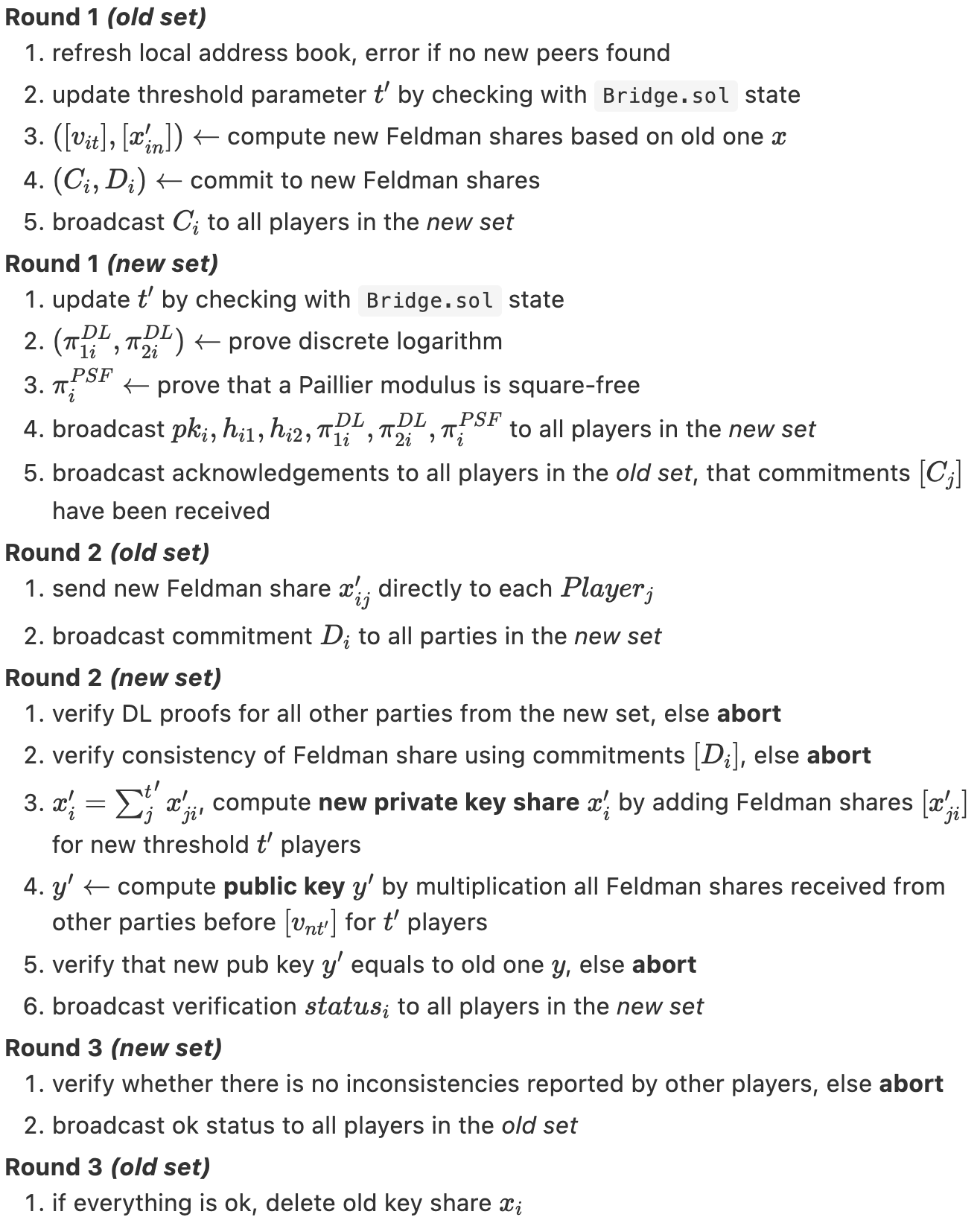Key Resharing
The following details the process for key resharing.
Key resharing is an operation that makes multi-party threshold signing truly practical and secure under the realistic dynamic environment.
This operation allows for both:
- Onboarding new relayers with new private key shares, and
- Recalibrating threshold requirements
This is done without the need to change the underlying private key, which is a delicate and expensive procedure.
Our observations in the blockchain bridging space reveal that a big portion of vulnerabilities found are exploits of the key resharing mechanism and the lack of well-defined protocols at their implementation. For ECDSA, the well studied resharing protocol was only introduced in the latest revision - CGGMP21. We presume that these vulnerabilities are a result of sharing sensitive key material as well as the operation needing to be repeated regularly.
By regularly updating private key shares, the resharing mechanism can act as a defense measure from a proactive adversary. Such a key share refresh mechanism aims to prevent an attacker from consecutively compromising relayers and ultimately recovering the full private key.
Similar to the initial keygen operation, resharing can also be triggered by the same governance contract onchain and propagated to the MPC relayers via emitted events.
The resharing protocol requires, before the interactive protocol, current committee members to be aware of new peers and vice versa. Given the number of security limitations of DHT-based peer discovery protocols and the overhead of running it in a small-scale network - we opted to use a static configuration that is shared securely and in advance.
Also note that during this procedure, the entire set of new relayers must be active, but only a threshold number of old relayers are required to participate. The interaction flow of the resharing scheme leaves all control in the hands of old committee (relayer) participants. This committee decides with whom they will interact to send cryptographic materials needed to generate key shares. Old committee relayers must identify relayers from the new committee as observed from the Bridge.sol contract. For this, communication channels are required to be authenticated by the public keys that constitute the address stored onchain.
Flow
- Party starts a relayer node for the first time
- fetches public parameters from
Bridge.sol - connects to bootstrapping nodes to discover other peers address
- advertises itself to the rest of the network
- go through Setup steps
- fetches public parameters from
- Admin checks whether new party is online and calls
adminAddRelayer()ofBridge.solwhich ends emittingRelayerAddedevent - All relayers including new ones initiate
Reshareprotocol